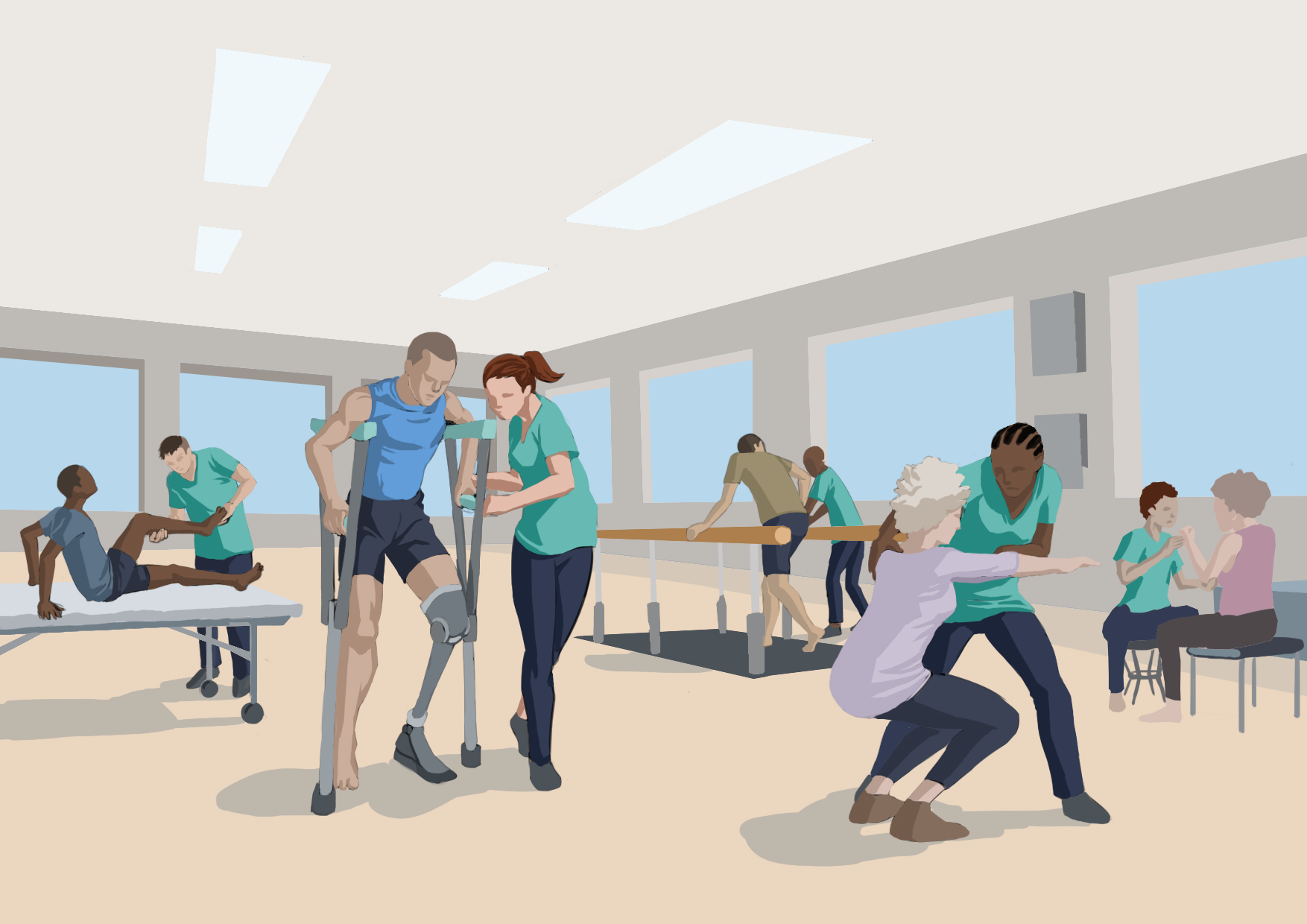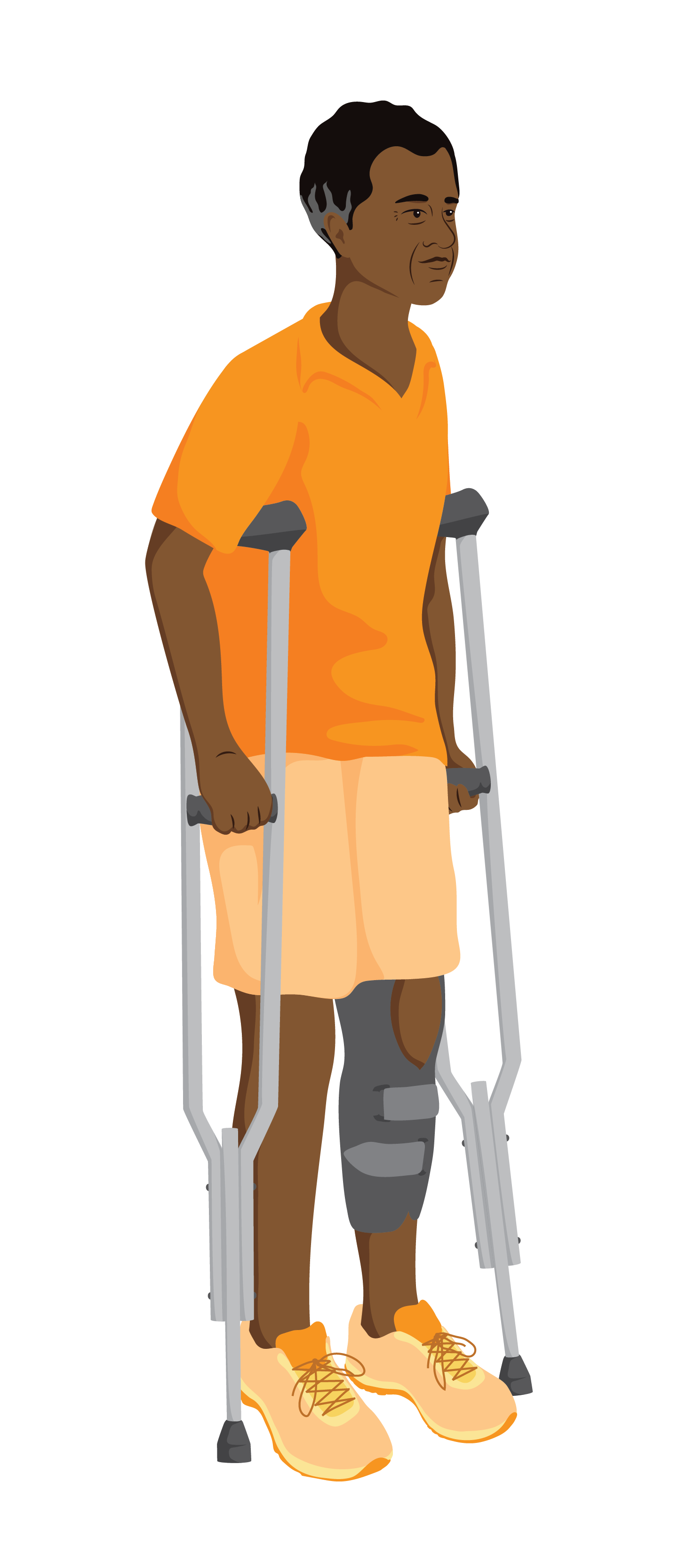3. Who and where is rehabilitation delivered?
Rehabilitation is commonly delivered by health professionals with training in the provision of rehabilitation.
These include speech, language, occupational, and physical therapists; prosthetists and orthortists; psychologists, rehabilitation medicine doctors, rehabilitation nurses and others.
These rehabilitation professionals commonly work together in multidisciplinary teams to provide care.
In situations where there are no or limited rehabilitation workers, a task sharing approach can be used to increase access to rehabilitation. Task-sharing may involve training mid- and low-level cadres of health workers (eg. medical officers, general nurses) to deliver some services offered by higher-level cadres (eg. specialists) in order to optimize the reach of a limited health workforce.
In other settings where there are adequate rehabilitation workers, it may also be beneficial if other non-rehabilitation health workers such as general practitioners, understand the importance of rehabilitation and incorporate it into the care they provide.
The task sharing approach involves:
- Training existing health workforce such as doctors and nurses to provide rehabilitation
- Providing only selected rehabilitation interventions that can be easily learned, and safely, effectively and feasibly delivered by trained health workforce
- Providing mentorship and supervision for the existing workforce in their provision of rehabilitation
Places where rehabilitation can be delivered include:

A Specialized /Secondary and tertiary health care settings
- Specialized rehabilitation facilities. For example, rehabilitation hospitals
- Secondary and tertiary health care settings. For example, regional hospital, eye hospital
- Primary health care settings.
- Primary health care hospitals. For example, district hospitals, rural clinics
- Community. For example, home, school, workplace, health club and community



![]() Question
Question

Meet Hugo
Hugo had an accident and has had a surgery on his left knee in a specialized health facility.
Hugo after recovering from the surgery has been asked to go home and attend regular appointments. Hugo does not have enough money and cannot travel the long journey from his community to the specialized health facility for frequent health care.
He therefore has his regular appointments at the local health clinic which has a primary care doctor and a nurse.
At his first appointment at the local health clinic, the doctor noticed that Hugo was unsteady with poor balance and was being supported to walk by two family members. Hugo explained that he was finding it hard to walk and had difficulty moving to the toilet and the bathroom.
The primary care doctor completed a rehabilitation screening and assessment and identified that Hugo would benefit from rehabilitation. The doctor began by showing Hugo simple exercises he could practice at home. He also provided Hugo with assistive products to help him move about, including crutches and a splint for his knee. The doctor also collaborated with the nurse for Hugo’s follow up care.
During a follow up appointment at the clinic, Hugo met the nurse who worked at the local health clinic. She also taught Hugo exercises to improve his functioning.
Hugo can now move about on his own and does not need family members to carry him.
Who were the health professionals involved in helping Hugo to access and receive rehabilitation?
- The doctor who noticed that Hugo would benefit from rehabilitation care. He screened and assessed Hugo for functioning difficulties, provided as assistive device and worked together with the nurse to provide the rehabilitation care.
- The nurse who worked together with the doctor and taught Hugo interventions to improve his functioning
![]() Reflection
Reflection
- What do you think might have happened if Hugo had not met the people?
![]() Discussion
Discussion
- Have you or someone you know ever received rehabilitation care?
- Which type of health worker provided the rehabilitation?
- Where was it provided?
- Share examples with each other if you are in a group.
